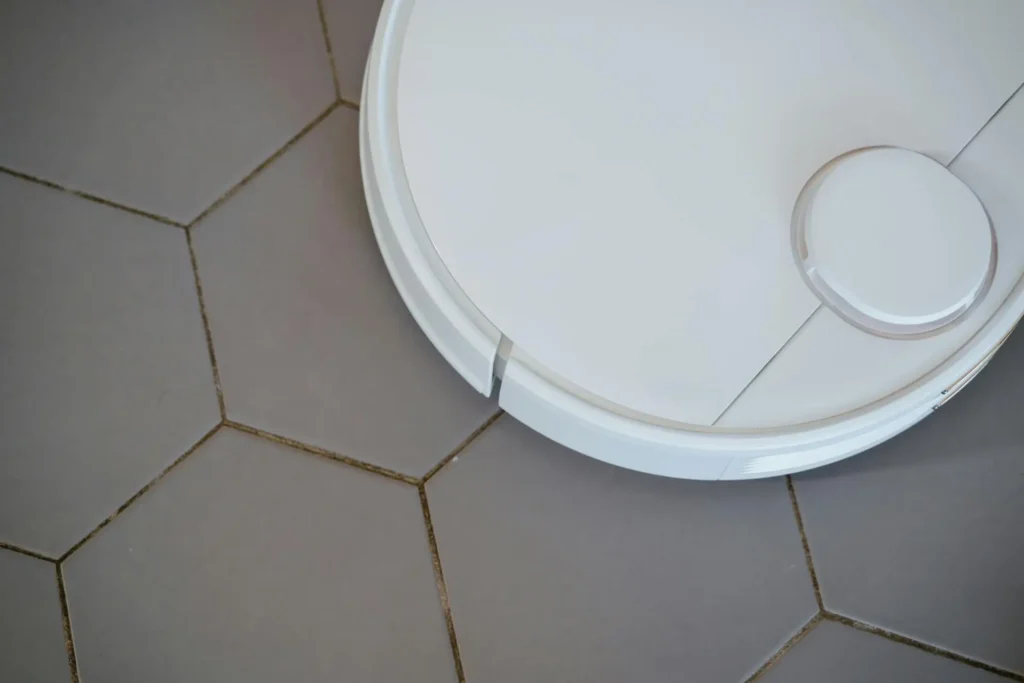Signs of Water Damage Under Tile: What to Watch For

Water damage can sometimes hide in plain sight, especially when it’s trapped under tile floors. While tile is generally resistant to water, what’s happening underneath the tile is a different story. Water can seep through cracks, grout lines, or unsealed areas and start causing damage below the surface. In this blog, we’ll explain the common signs of water damage under tile, why early detection is important, and what steps you should take if you suspect a hidden issue. Why Water Damage Under Tile Is a Serious Problem The tile itself may not show damage right away, but water trapped underneath can cause: Mold growth Weakening of the adhesive or grout Warped or damaged subflooring Structural issues over time If left untreated, hidden water damage can spread, leading to expensive repairs and potential health risks from mold exposure. Common Signs of Water Damage Under Tile Here are key warning signs to look for: Loose or Shifting Tiles If tiles that once felt firmly attached suddenly start moving, it could be a sign that water has weakened the adhesive underneath. Cracked or Crumbling Grout Grout is supposed to hold tiles tightly together. If you notice cracking, crumbling, or missing grout lines, it could mean moisture has eroded the bonding material. Discoloration or Stains Dark spots, yellowish stains, or water marks around grout lines or edges could indicate hidden water buildup under the tile. Soft or Spongy Flooring Tile floors should feel hard and solid underfoot. If you feel soft spots, sagging, or any give when you step, moisture could be damaging the layers underneath. Mold or Mildew Smell A persistent musty or earthy odor, especially near tile flooring, is a strong clue that water damage and mold growth may be hidden below. Warping or Buckling In more advanced cases, tiles themselves may start to lift, buckle, or warp due to moisture expansion underneath. Where Water Damage Under Tile Is Most Likely to Happen Here are key warning signs to look for: Bathrooms (especially near showers, tubs, and toilets) Kitchens (near sinks and dishwashers) Laundry rooms (near washing machines) Entryways (especially after heavy rain) Anywhere flooding or plumbing leaks have occurred Tiles installed over wooden subfloors are especially vulnerable because wood can absorb moisture quickly, leading to rot and weakening. How to Confirm Water Damage Under Tile If you notice any of the signs listed above, it’s important to investigate further. However, because the damage is underneath, it’s not always visible right away. Professional water damage experts use tools like: Moisture meters Infrared cameras Thermal imaging These tools can detect hidden moisture without tearing up the floor unnecessarily. Why You Should Act Quickly Ignoring early signs of water damage can lead to: Hidden mold behind walls Mold growth within 24–48 hours Expensive structural repairs Damage spreading to the surrounding walls or floors Health risks from mold exposure, especially for people with allergies, asthma, or weakened immune systems Quick action not only protects your home but can also help you qualify for insurance coverage before the situation worsens. Can I Fix Water Damage Under Tile Myself? In minor cases where only the grout is affected and the subfloor remains dry, you might be able to handle small repairs. However, serious water damage beneath the tile requires professional help. Professionals can: Accurately locate all hidden moisture Remove damaged materials safely Dry and sanitize affected areas Prevent future mold and mildew problems Reinstall new flooring if needed Trying to DIY large-scale water mitigation can leave hidden moisture behind, leading to future problems that are much more costly to fix. Trust Tradewinds Restoration for Water Damage Solutions At Tradewinds Restoration, we specialize in detecting and repairing hidden water damage, including water under tile floors. Our trained team uses advanced equipment to find moisture you can’t see, protecting your home, your investment, and your health. If you suspect water damage under your tile, contact Tradewinds Restoration today for an expert inspection and fast, professional service. Contact us
Water Mitigation Definition: What It Is and How It Differs from Water Restoration

If your home or business suffers from water damage, you might hear terms like water mitigation and water restoration used often. But what do they mean? Are they the same thing? Understanding the difference can help you act faster and protect your property. In this blog, we’ll explain water mitigation, how it works, and how it’s different from water restoration so you know exactly what steps to take if you ever face water damage. What Is Water Mitigation? Water mitigation is the first step in addressing water damage. It focuses on reducing and preventing further damage after water intrusion. In simple terms, water mitigation means stopping the water problem from getting worse. It does not involve repairing or rebuilding, which comes later during restoration. Key Goals of Water Mitigation: Remove standing water quickly Dry out wet areas with special equipment Protect undamaged parts of the property Prevent mold growth and structural damage Stabilize the property for future repairs Water mitigation is about emergency response. The goal is to control the damage so that it does not spread and become more expensive or dangerous. What Happens During Water Mitigation? A professional water mitigation company will usually: Assess the situation and locate hidden moisture Remove standing water using pumps and vacuums Use industrial fans, dehumidifiers, and air movers to dry the area Remove soaked or unsalvageable materials like carpet padding, drywall, or insulation Sanitize affected areas to stop bacteria and mold Board up windows or cover roofs if needed to prevent more water intrusion Important: Water mitigation does not include replacing damaged materials, rebuilding walls, or repainting. That comes next. Water Mitigation vs. Water Restoration: What’s the Difference? Many people confuse water mitigation with water restoration, but they are two very different steps in the recovery process. Water mitigation focuses on stopping the initial water damage from spreading and preventing further harm. It happens immediately after the damage occurs and involves actions like removing standing water, drying the affected areas, and stabilizing the property. Mitigation is about emergency response, and it doesn’t involve repairing or rebuilding. On the other hand, water restoration begins after mitigation is complete. Restoration focuses on repairing and rebuilding the property to its pre-loss condition. This may include replacing drywall, fixing damaged flooring, repainting, and making other necessary structural repairs. In short, mitigation controls and contains the damage, while restoration repairs and rebuilds what was affected. Why Is Water Mitigation Important? Quick water mitigation can: Save thousands of dollars in future repairs Prevent mold growth! (which can start within 24–48 hours) Protect your belongings and structural materials Make the restoration process faster and safer Help you meet insurance requirements for a covered claim Delaying mitigation can lead to permanent damage, health risks, and possible insurance claim denials. How Fast Should You Act After Water Damage? Immediately. The longer you wait after a leak, flood, or water damage event, the worse the damage can become. Fast water mitigation reduces the risk of: Hidden mold behind walls Wood rotting and weakening Electrical hazards Bacterial contamination Professionals usually recommend starting mitigation within the first 24 hours. Can I Do Water Mitigation Myself? For very small incidents (like a minor spill), you might dry the area yourself with towels and fans. But for larger water damage, such as a burst pipe, flooded room, or sewage backup, professional water mitigation is essential. Professionals have: Specialized drying equipment Moisture detectors to find hidden wet spots Training in preventing mold and contamination Trying to DIY large-scale water mitigation can leave hidden moisture behind, leading to future problems that are much more costly to fix. Trust Tradewinds Restoration for Professional Water Mitigation At Tradewinds Restoration, we specialize in emergency water mitigation services to protect your home or business. Our team responds quickly, uses state-of-the-art equipment, and knows how to stop water damage before it spreads, giving you peace of mind and a head start on recovery. Contact us


